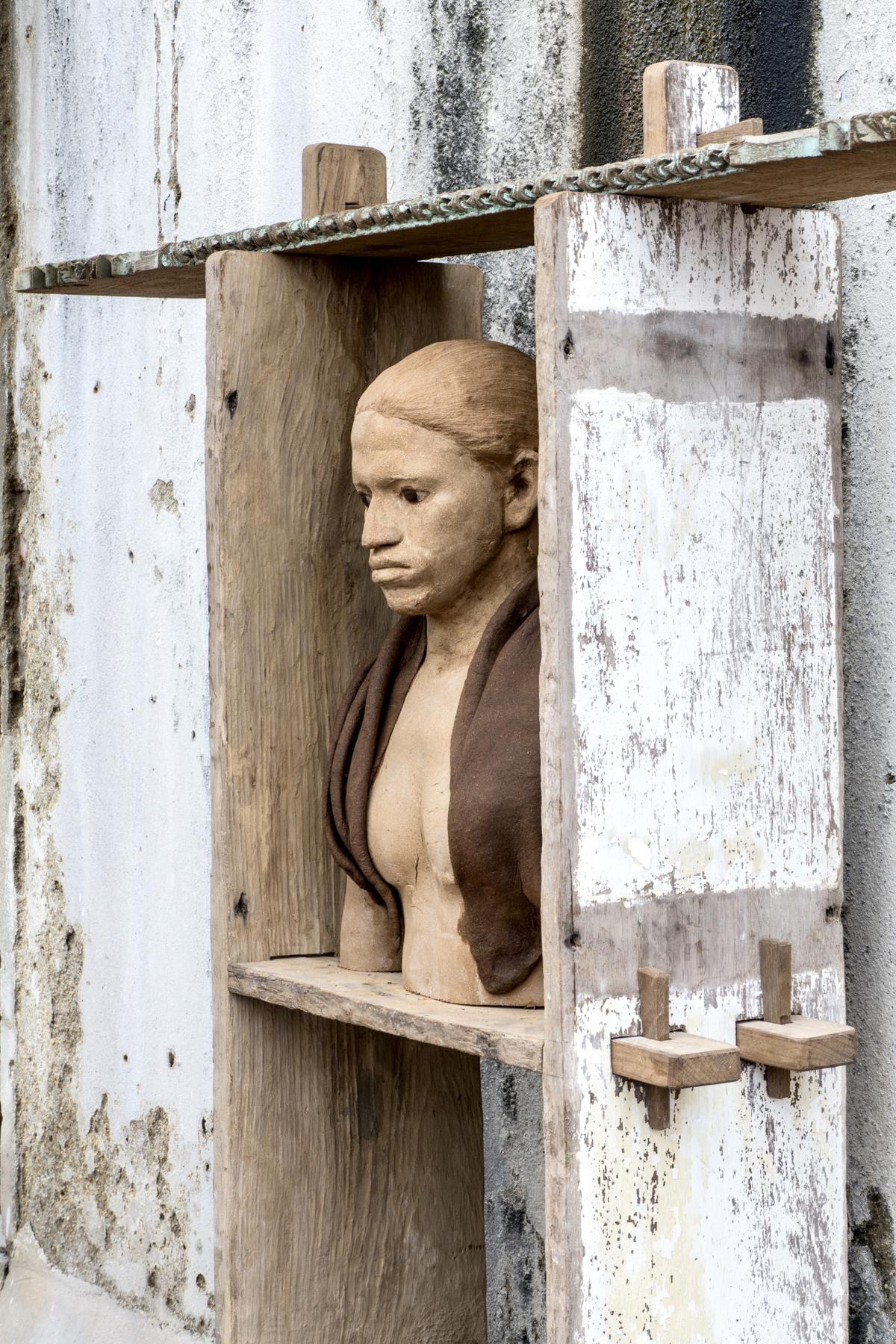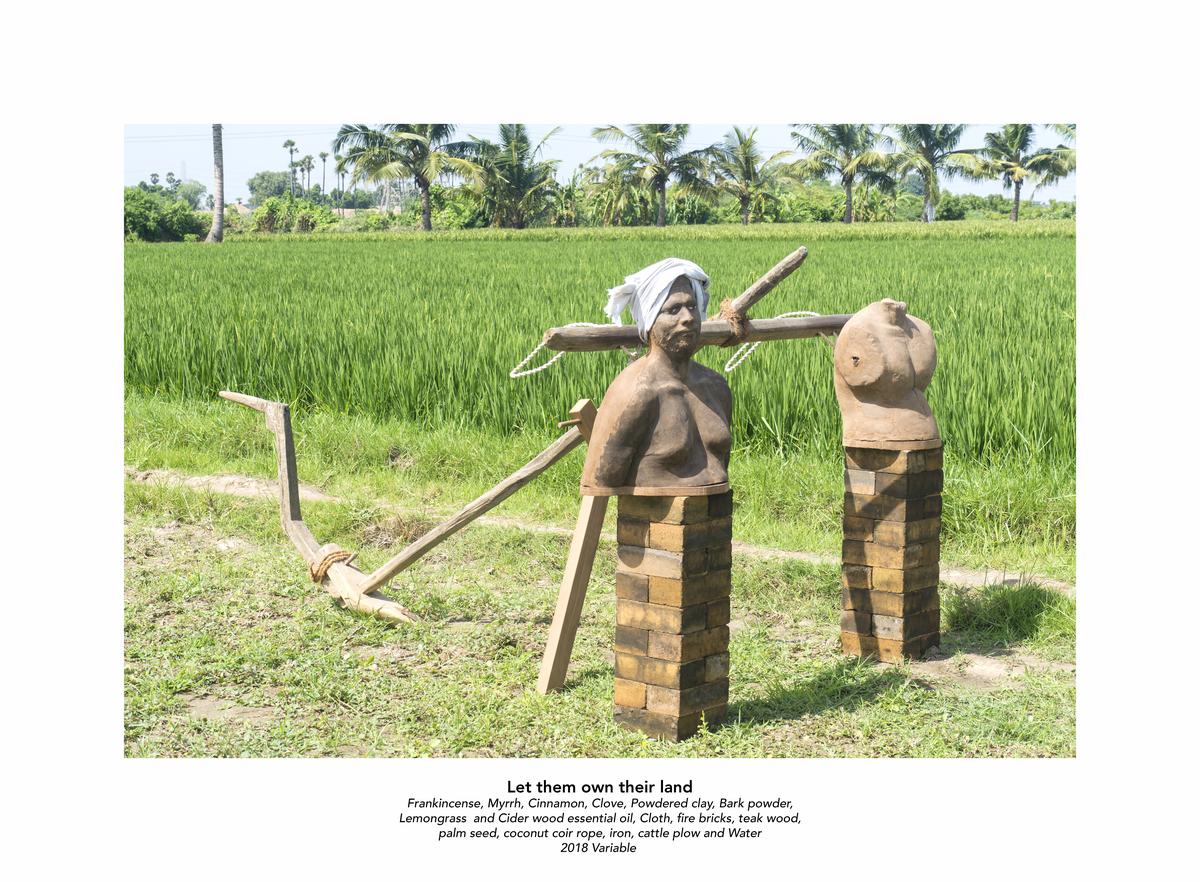In a humble studio on Davidson Street in Parrys, artist Benitha Perciyal K is immersed in moulding and preserving elements of the earth. Originally from Thiruvannamalai, 45-year-old Benitha arrived in Chennai with a creative vision. With a Master of Fine Arts in painting and printmaking from the Department of Art and Culture in Egmore, she has dedicated the last 22 years to creating unique pieces from natural materials.
“After completing my Master’s in 2002, I spent 10 years at Lalit Kala Akademi before establishing my own studio with my husband,” says Benitha.
During college, accessing materials and tools was easy as everything was available in the studio.

The Mysterious Visitor
“After graduating, I wanted to continue creating art independently without relying on my family. So, I focused on using minimal materials. This eventually led me to natural materials including herbs, wood, bark and seeds and used objects I found nearby,” she says.
She does not call them truly ‘organic’. Synthetic materials are derived from natural elements, but they are processed and transformed. “We often do not know the exact processes behind these materials or the information we have may not be fully accurate. So I started experimenting with these natural materials, which helped shape my distinctive style and not with the output of a beautiful picture,” shares Benitha, reflecting on the inspiration behind her unique approach to art.
Benitha’s works have been showcased at numerous art exhibitions in Chennai and across India. Organisations such as Lalit Kala Akademi support artists like her by offering grants and financial aid. To create her art, Benitha crafts her own materials, sourcing them directly from nature — using elements like bark and leaves. At times, she also sources materials from others or buys them from neighbourhood herbal shops and other outlets, ensuring they are all-natural.
Her pieces often feature religious motifs. Reflecting on her inspiration, she shares, “I was born and raised in Thiruvannamalai, a place known for its temple and mountains. I come from a Christian family that was open-minded, allowing me to experience different cultural and religious influences from a young age, and this often finds its way into my work, both directly and indirectly,” says Benitha.
She has created pieces from materials like cast frankincense, wood, leather, and banana fibre, each carrying a spiritual essence.

One of her notable works is a Reclining Christ sculpture with no arms, created from cast frankincense. This piece embodies spiritual themes and conveys a contemplative, almost meditative quality through its simplicity and natural materials.
Learning from seniors
To learn about artworks and artists, she would attend exhibitions and study art catalogues. Networking involved travelling and face-to-face conversations, with much of her knowledge coming from her seniors. “The insights shared by fellow artists played a major role in shaping us,” she recalls. One of her greatest influences was her teacher Valsan Koorma Kolleri.
Benitha’s studio is her sanctuary, where she spends most of her time, often working through the night. She does not follow a rigid schedule, choosing instead to work on ideas as they come. Her focus is on expressing creativity rather than meeting deadlines. Nature remains central to all her creations, and her work frequently incorporates unique textures and forms. In one piece, she has preserved a bark and the wings of flies using tree gum. She has also created handmade books with banana fiber and wood, sculptures with preserved myna skeletons, and artworks using found items and natural elements.
“I allow viewers to interpret my art in their own way, while also conveying its true meaning. Many viewers, including those who buy my work, share their interpretations with me, and I encourage them to explore the art in their own unique way,” she says.
Material sourcing and preservation are some of her biggest challenges. Natural materials have limited longevity, and preserving them can be demanding. “I do not use chemical binders, so keeping these pieces intact is difficult,” she explains. “I rely on natural gums from trees for adhesion, which take time to prepare, and fading remains an issue. Preservation beyond the artwork’s initial life is very challenging, often requiring costly natural preservatives. I encourage aspiring sustainable artists to be determined and fully aware of these hurdles. I hope to see more artists taking up sustainable art forms,” she signs off.
Her artworks are currently on display at Lalit Kala Akademi as part of the Nature Morte exhibition curated by Ashvita’s. Open to the public until November 17, the exhibition also features the works of four other artists: Nidhi Agarwal, Bassist Kumar, and Parul Gupta.
Published – November 09, 2024 06:09 pm IST
